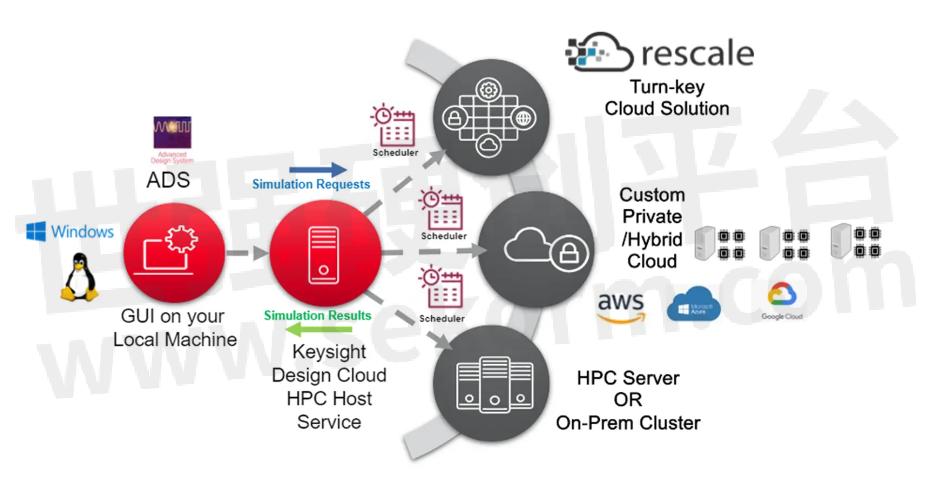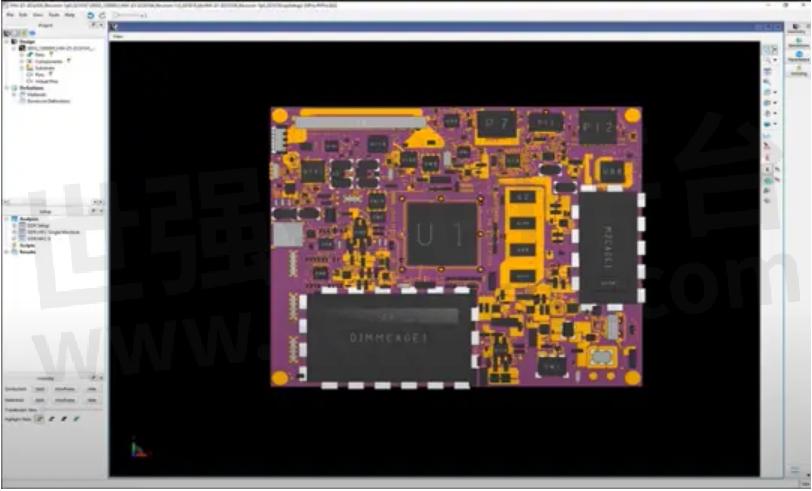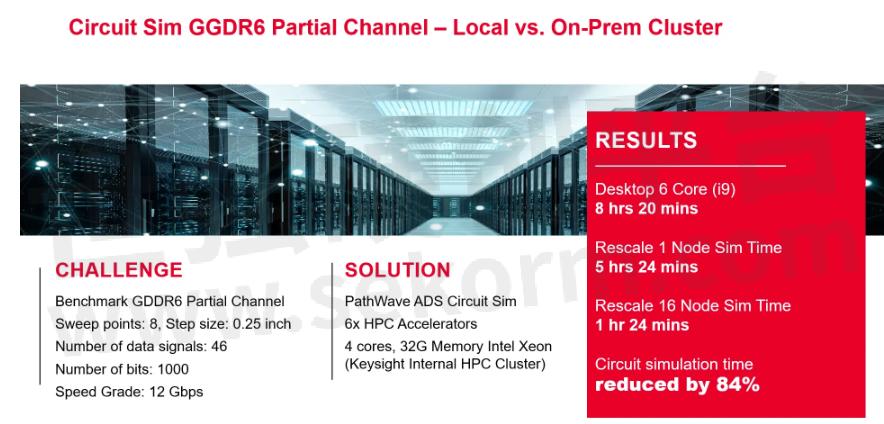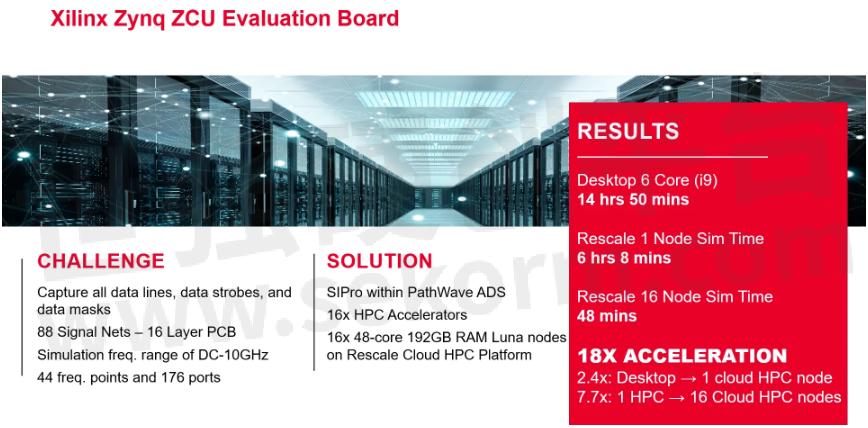Cut Down Design Time by Moving EM Simulations to the Cloud

As next-generation product designs become increasingly complex, the simulations required to verify your designs can be massive and time-consuming. For example, if you’re designing high-speed digital boards, you have to consider your design’s signal integrity, transfer speeds, and reliability. As standards like DDR and PCIe require faster speeds and higher frequencies, the subsequent design complexities increase as well. There isn’t enough time in the design cycle to simulate everything you need.
The latest innovations in cloud technology have advanced to the world of design and simulation. Using high-performance computing and cloud simulation, design teams are cutting their simulation times by over 80%! Could moving your simulations to the cloud improve your design times?
What is High-Performance Computing?
High-performance computing (HPC) uses of parallel processing algorithms and systems to solve complex computational problems. It incorporates both administrative and computational techniques to aggregate computing power and delivers much higher performance to solve large problems in science, engineering, and business.
As it applies to design simulation, HPC is a powerful tool that allows you to perform parallel simulations via a private cloud or on-premise server. However, if you don’t currently have this existing infrastructure in place, it is complex to set up and costly to maintain. An effective alternative is to utilize Keysight Design Cloud, which is available with Keysight's PathWave Advanced Design System (PathWave ADS).

Figure 1. Keysight Design Cloud – Multiple deployment models
How Does Parallel Simulation Work?
The most time-consuming part of electromagnetic (EM) simulations is usually the frequency sweeps. With parallel simulation, each frequency point is distributed across multiple remote machines, and each machine solves for its frequency independently. This process significantly reduces simulation time because the processing power isn’t dependent on a single machine. Depending on how many machines you are running at a time through the cloud server, you can reduce your simulation time quite a bit.
Using standard simulation methods, simulating the device in Figure 2 at 26.5 GHz on a local machine took nearly three hours. Moving that same simulation setup to the cloud accelerated the simulation time to 1 hour 13 mins – 2.5x faster! This improvement occurred with just a single machine. When the designers performed the same simulation across eight machines, the simulation took 30 minutes. That’s six times faster than simulating on your local computer.

Figure 2. MMIC LNA with bond wires on parent assembly with 3D connector
Design workspaces can be gigabytes in size, but the simulation files you need may only be 10s of megabytes. You don’t need to utilize the entire workspace file to simulate. By using cloud simulation, the software only sends the files that it needs in order to run the simulation. Although the service is installed, once you click “simulate”, your PC is decoupled from the simulation, and the simulation is now running in the cloud. When the simulation is complete, it will download the simulation files directly to your PC. In the meantime, you are free to utilize your PC without worrying about processing power.
The Keysight Design Cloud also connects to the different design elements used in PathWave ADS to provide an in-depth signal integrity analysis of your designs. In the example in Figure 3, standard simulation times previously took up to fifteen hours to run. The R&D team waited overnight to view the results. But with cloud simulation, they were able to simulate in just two and a half hours. They ran eight parallel jobs in the cloud, reducing EM simulation time by 83%. They did not have to wait overnight, and they ran multiple simulations in a single day.

Figure 3. Signal integrity EM simulation on Xilinx evaluation board
By partnering with cloud platform provider Rescale, PathWave ADS jobs can now be farmed out to multiple hyper scalers based on your simulation needs while still staying within the native ADS environment. This solution leverages the latest core types, is accessed from multiple locations, and is ideal for peak scaling for large or small teams.
Benchmarks


Get rapid access to unlimited computing power on the HPC cloud and solve your simulation challenges using flexible models. Reduce board revisions through greater simulation coverage by leveraging parallelism and distributed computing. To learn more about how Keysight Design Cloud works, you can watch our on-demand webinar, Simulate More, Wait for Less.
Move your simulations to the cloud to shorten your time to market and achieve up to an 80% reduction in simulation time by integrating HPC into your workflow. Getting started with PathWave ADS with HPC Accelerators is a breeze. Request a free 30-day evaluation today!
- +1 Like
- Add to Favorites
Recommend
- Keysight PathWave System Design 2023 Software Accelerates RF System Design and Digital Mission Engineering Workflows for 5G Non-Terrestrial Networks
- Keysight PathWave Software Selected by Menlo Micro to Reduce Design Cycle for New Radio Frequency Microelectromechanical Switch
- Keysight Introduces PathWave Design 2024 with Automation and Collaboration Support for Enterprise EDA Workflows
- Keysight Introduces PathWave ADS 2024 to Accelerate 5G mmWave Design and Pioneer 6G Development
- FFC vs. FPC Connectors: Choosing the Right Connector for Your Application
- Keysight Unveils Comprehensive Design and Test Workflow for Next-Generation Memory Designs
- 5 Quick Tips You Should Know as a New PathWave BenchVue User
- Keysight Launches New Design and Simulation Software for Radio Frequency and Microwave Designers
This document is provided by Sekorm Platform for VIP exclusive service. The copyright is owned by Sekorm. Without authorization, any medias, websites or individual are not allowed to reprint. When authorizing the reprint, the link of www.sekorm.com must be indicated.





























































































































































































































































































































































































































































































































































































































































































































































































































































































